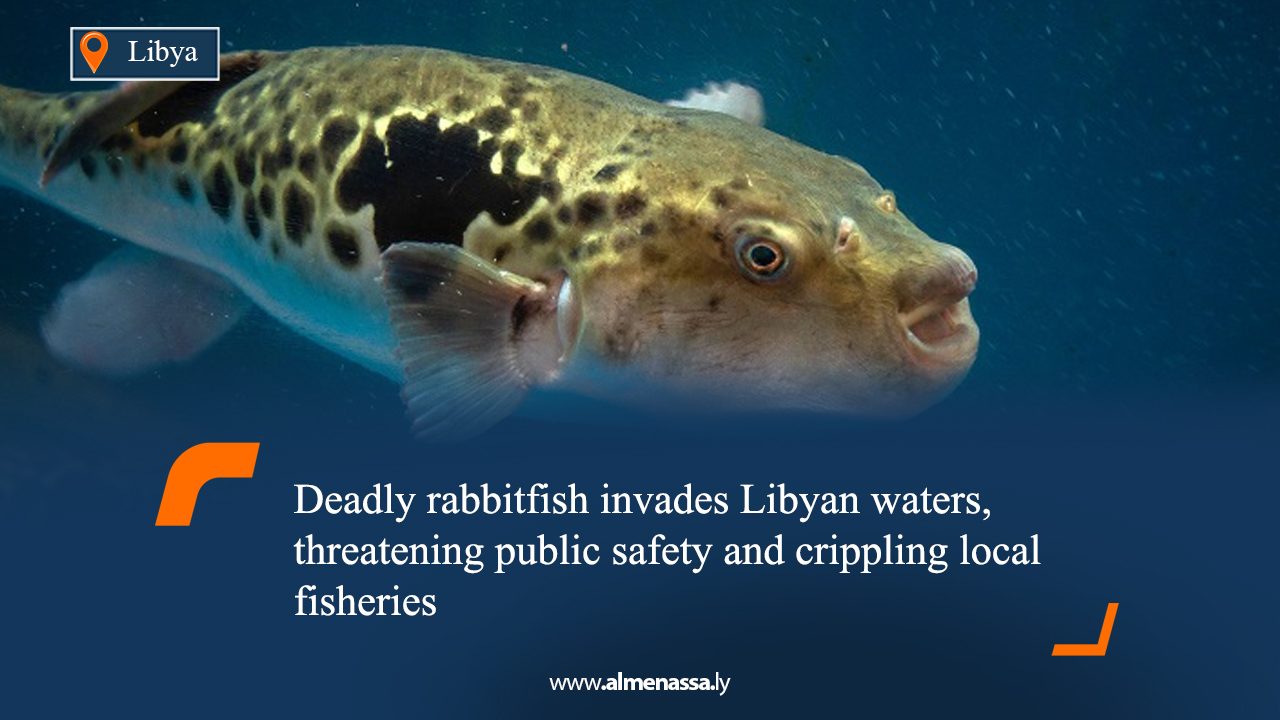The rabbitfish, a highly toxic and invasive species, has become a growing menace along Libya’s Mediterranean coast. Despite its known dangers, authorities have yet to enforce a full ban on its capture or develop an antidote to its venom. Several fatalities have already been recorded, and the fish continues to endanger citizens and disrupt the livelihoods of fishermen.
Official Warning
The Marine Protection and Inspection Office has issued a stark alert about the rabbitfish, describing it as one of the most poisonous marine species in the world. Recognizable by its grey skin, dark eyes, and rabbit-like teeth, the fish can grow up to 53 cm in length. Its venom is concentrated in multiple areas, beneath the skin, in its organs, marrow, liver, and flesh, making it lethal even in small doses. The toxin, tetrodotoxin, has no known antidote and can cause death within 6 to 8 hours. Symptoms typically begin within 20 to 60 minutes and include muscle paralysis, respiratory distress, vomiting, diarrhea, and a dangerous drop in heart rate.
The Ministry of Marine Wealth issued Decree No. 240 (2024), prohibiting the sale and distribution of rabbitfish. Citizens have been urged not to consume or handle the species under any circumstances.
Origins and Spread
Originally native to the Indian Ocean, the rabbitfish entered the Mediterranean via the Red Sea and Suez Canal. It was first spotted in Libyan waters in 2008 and has since spread rapidly along the coast, reaching as far west as Zuwara and even appearing in Tunisia. Climate models suggest that warming seas may further expand their habitat across southern Europe.
Impact on Fishermen
Local fishermen have voiced serious concerns. The rabbitfish aggressively targets other fish, damaging nets and complicating catch efforts. Its rapid reproduction and invasive feeding habits — including consumption of toxic algae — make it a persistent threat. Some fishermen remain unaware of its toxicity, increasing the risk of accidental exposure.
Public Health Incidents
In May 2024, Bishr Rural Hospital reported five bite-related injuries from rabbitfish, including a case involving a young girl, Awsama Miloud, who required toe amputation. Medical director Saleh Jouili confirmed the fish’s venom is intensified by its diet of poisonous algae and warned that bites often result in tissue necrosis and amputation.
In 2018, the Marine Science Organization documented a fatal poisoning in Tobruk. In 2021, the city hosted Libya’s first rabbitfish hunting festival to curb the spread of the invasive species. Despite these efforts, the threat remains. In 2024, Benghazi’s public sanitation company discovered a rabbitfish during routine cleaning at 23 July Park, underscoring its unpredictable presence.
Accidental Exposure and Legal Demands
In Zliten, a Libyan family unknowingly caught and handled a rabbitfish, unaware of its dangers. Jouili has called for legislation criminalizing the capture and sale of its members, alongside nationwide awareness campaigns to educate the public.
Scientific Findings
A 2022 study conducted by Omar Al-Mukhtar University revealed alarming concentrations of heavy metals, including lead, cadmium, chromium, and nickel, in rabbitfish specimens from Derna. These findings raise further concerns about the fish’s impact on human health and marine ecosystems.
Call to Action
Experts and officials are urging immediate, coordinated action. This includes stricter enforcement of fishing bans, public education, and scientific monitoring. The rabbitfish is not merely a nuisance — it is a biological hazard that threatens Libya’s coastal communities, marine biodiversity, and public health.


